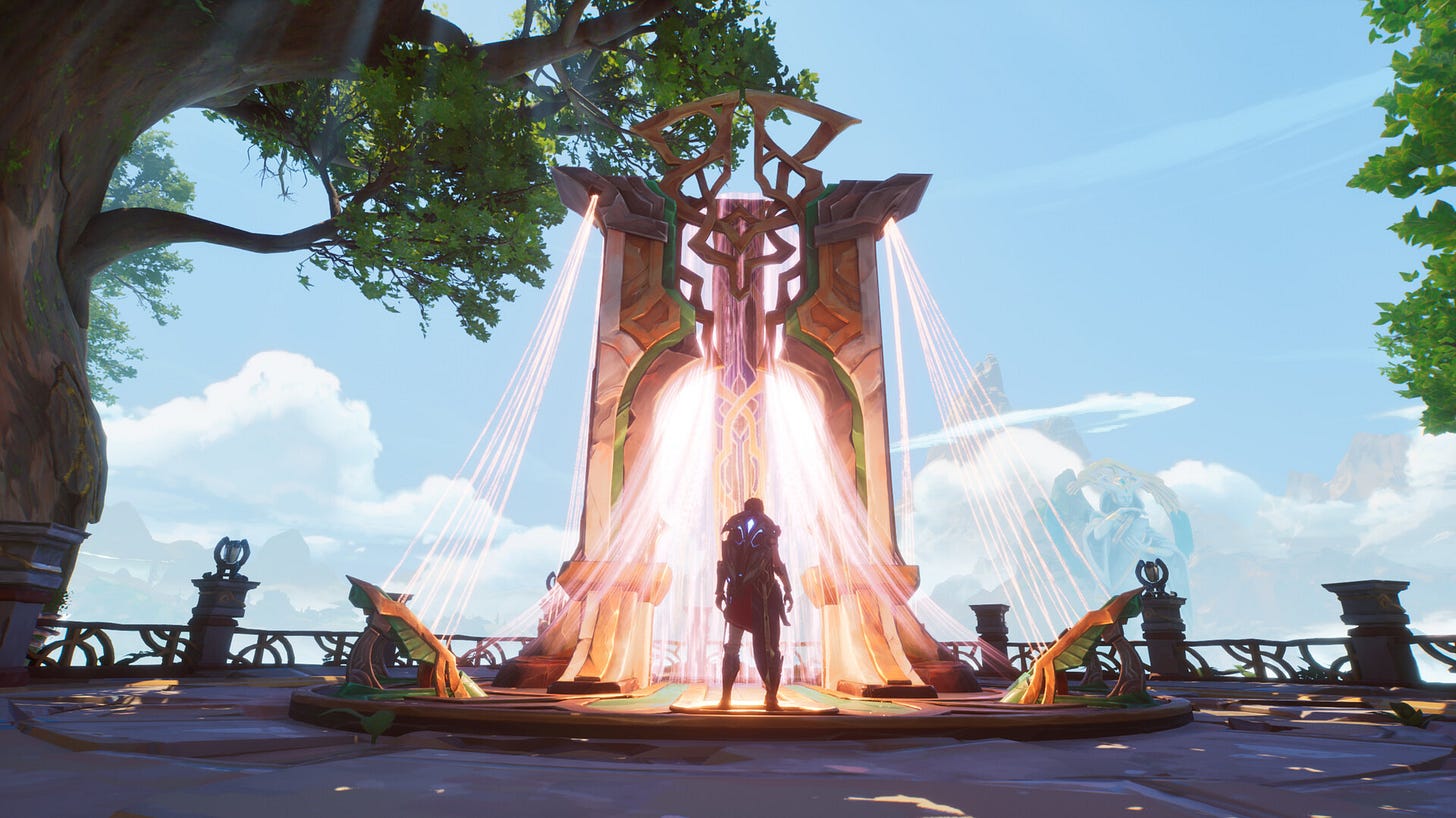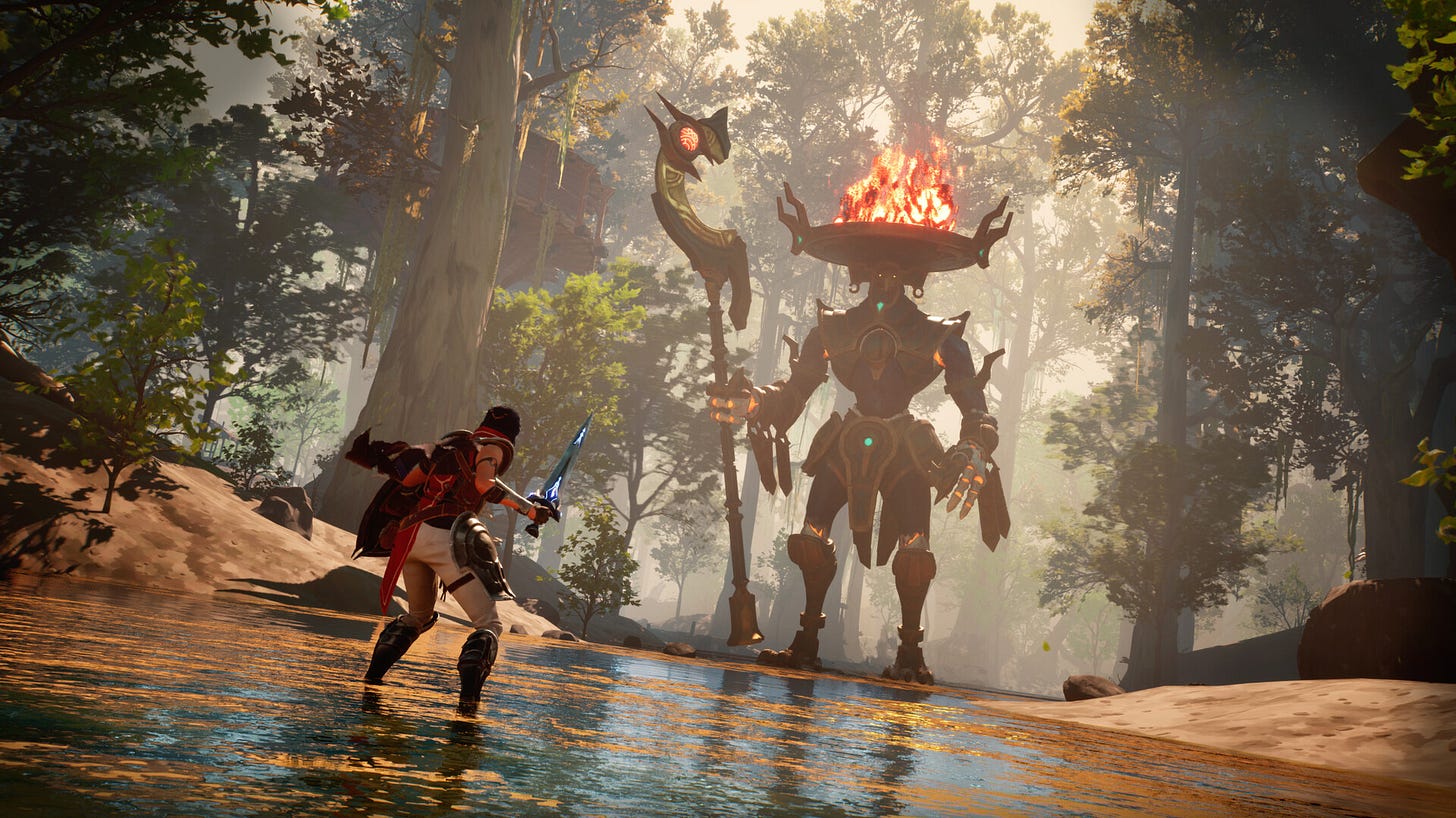In 2005 I went to a quiet, desolate place populated only by eagles and lizards. Clouds scudded across the sky, wind blew sand across the plains, and water sat still and undisturbed in the lakes.
I entered this place and hunted down the only other creatures that lived there: the colossi. The land had been theirs for millennia, and they bothered no-one. I killed them nevertheless, never feeling good about it.
That was Shadow of the Colossus:
The PlayStation 2 could barely run it. Later, there was a PS3 version, which ran slightly better, and then a PS4 remaster. That remaster has never been released on PC, much to my chagrin.
I’d not played anything even remotely like Shadow of the Colossus in the following twenty years. Two decades! The closest was Breath of the Wild, which had large beasts and a stamina-based climbing system, but it didn’t quite connect the dots.
Then the Eternal Strands demo came out, and this happened:
Someone, at last, had created a follow-up of sorts. Clinging on to that arkon in the demo, I was transported back twenty years. I was 24 years old again.
Eternal Strands is a very different game, of course. It doesn’t have the lonely melancholy of Shadow of the Colossus, instead going for a more traditional fantasy adventure vibe.
There’s a cosy hub area where you get to chat with your fantasy buddies, upgrade the outpost and fiddle with your gear. It’s very Bioware, which makes sense given one of the lead devs is ex-Bioware.
In Shadow of the Colossus you had your sword and bow and that was about it. Eternal Strands gifts you with a bunch of magic which works in a highly systemic fashion, mixing and matching with the environment to produce interesting effects. That giant arkon, for example: in the clip above you see me freeze his foot to the ground, giving me a brief moment during which I can climb up his leg.
Back in 2005, Shadow of the Colossus was doing stuff with its tech that went rather unnoticed. The animation system and the way the action unfolded in such unpredictable ways was highly unusual for that era of gaming. Eternal Strands is working its own magic tricks, delivering a more reactive environment than I’m used to in fantasy adventure. That freeze spell, for example, doesn’t simply freeze the entire creature, as in most games: if I freeze the arkon’s arm, it’ll have a different result than freezing its leg. The animation on the giant creature is responsive in a way that feels entirely natural, to the point that I don’t really think about it: until I realise I’ve not really seen it in games before.
There are hints of Monster Hunter, bits of Zelda, elements of Dragon Age. The combat is fun, though in the early stages not amazing. The world is gorgeous and intriguing. The story is immediately captivating, if a little rote. The dialogue and characters are an awful lot of fun, even if there’s a bit too much of it at times.1
It’s a game that respects your time, too. The way it’s designed encourages you to pick a quest and venture out on an expedition, rather than simply hoovering up map markers. Not got much time? Go and collect some resources. Fancy a challenge? Take down one of the giants. Got a bit more time to play? Explore a new area and open up the map. Only got ten minutes? Wander round camp, upgrade your stuff and talk to your friends. The hop-in, hop-out design works particularly well on a Steam Deck, where you can easily put the thing to sleep.
Eternal Strands is a game that is built from lots of component parts, and looking at any one of them in isolation is to miss the point. It’s when everything is working together, from the world building to the combat to the magic to the characters to the giant-clobbering, that it suddenly becomes something unique and special.
It has a cumulative charm, not unlike Shadow of the Colossus. It gets under your skin.
I wish more game writer would take note of Hades’ restraint and precision, whereby NPC dialogue never lasts more than two panels.



